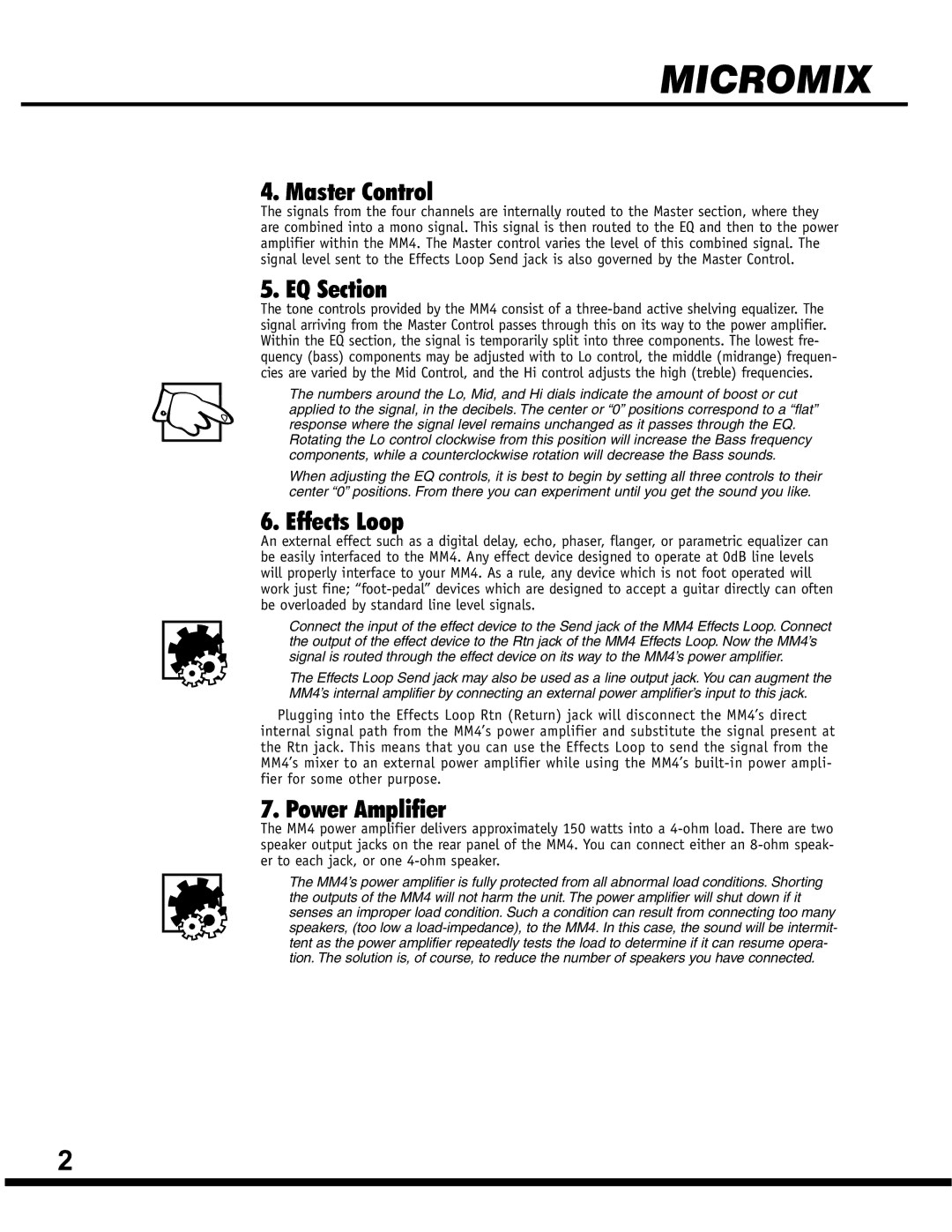MM-4, MM4 4 CHANNEL POWERED MIXER specifications
The Yorkville Sound MM4 is a 4-channel powered mixer that is designed for musicians, DJs, and public speakers seeking a compact and versatile audio solution. This innovative mixer is well-regarded for its high-quality sound, robust construction, and user-friendly features that make it an ideal choice for various applications, including small gigs, home studios, and presentations.At the heart of the MM4 is its powerful 400-watt amplifier, which delivers clear and dynamic sound across its four channels. Each channel is equipped with a combination of XLR and 1/4-inch inputs, allowing for the seamless connection of microphones, instruments, or other audio sources. This flexibility makes it a perfect fit for diverse performance needs, whether you are amplifying vocals or mixing instruments.
One of the standout features of the MM4 is its built-in digital effects processor, which offers an array of effects such as reverb, delay, and chorus. Users can easily enhance their audio with just a turn of a knob, allowing for creative sound shaping that can suit any performance style. Each channel includes independent EQ controls, letting users tailor the sound to their liking and compensate for room acoustics or sound sources’ characteristics.
Portability is another essential aspect of the Yorkville Sound MM4. Weighing in at a manageable size, it is designed for easy transport from one venue to another. Its durable construction ensures that it can withstand the rigors of regular use, making it a reliable companion for touring musicians and event organizers alike. The intuitive layout of the mixer makes it accessible even for those who may be new to audio mixing, allowing for quick setup and operation.
The MM4 also features flexible output options, including a master output with XLR and 1/4-inch connectors, as well as a headphone output for private monitoring. This diversity ensures compatibility with various professional audio equipment, providing greater options for amplification and recording.
Overall, the Yorkville Sound MM4 stands out as an excellent choice for anyone needing a reliable, high-quality powered mixer. With its thoughtful design, powerful amplification, and intuitive features, it’s easy to see why this model has gained a dedicated following among audio professionals and enthusiasts alike.

